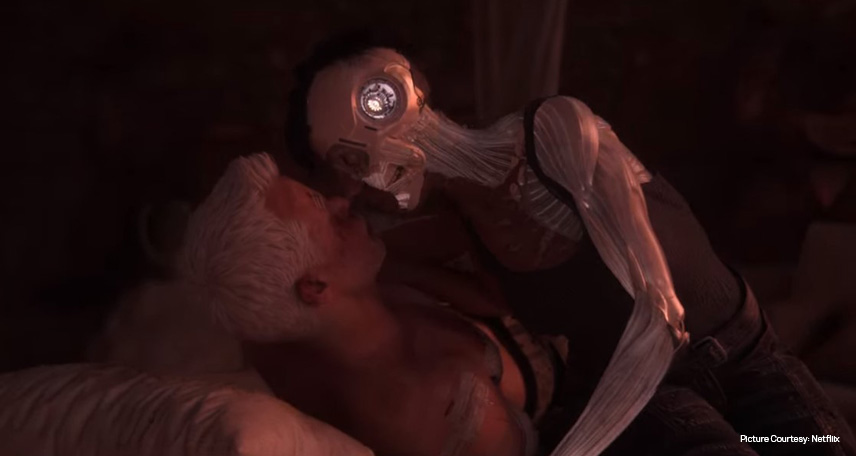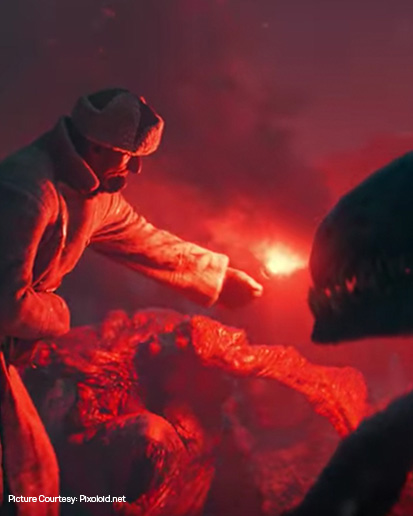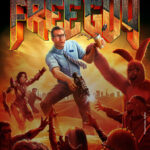LOVE DEATH + ROBOTS: How video game aesthetic influenced the series and what to expect from season 2 and 3

Video games used to be a conduit for telling a story, when used as a plot device in a film, but now you can find a gajillion movie adaptations. Video games haven’t just been accepted, they’ve been embraced with open arms and changed the way we construct and consume media. The aesthetic and narrative freedom offered by this genre is unlike anything else- you create your own look, your own story, and sometimes even your own world through the game.
Now imagine, Black Mirror took a detour, and instead of using video games as a means to further the story, the video game aesthetic permeated the entire experience of the series. That’s Love Death + Robots in a nutshell.
Plots, Visuals and Themes: How LD+R Uses Gaming’s Most Noticeable Elements
Depending on the beginning you get (it varies from user to user), Season 1 pulls you straight into the gripping anthology that is Love Death + Robots with the story of “Sonnie’s Edge”.
Everything about this episode feels straight out of a video game, from the plot to the “graphics”. Sonnie, a champion gladiator, controls her beast “Khanivore ” in underground beast fights in a dystopian London. The episode plays out like a video game, hitting every major beat in a snug 20-minute time frame: background, motives, “gameplay” (aka the juiced-up ‘Street Fighter: Ultimate Beast Edition’), and conclusion, are all tied together in an immersive narrative told through a charismatic protagonist with an “edge”.
“The Secret War ” is like Call of Duty’s pagan cousin, “Lucky 13”, the aircraft combat-based spin-off. “Beyond the Aquila Rift” plays out like a horror game that tricks you into thinking it’s on your side, while “Good Hunting” explores the mythic, fantasy end of the spectrum.
While every instalment in the series is self-contained, the overarching themes are consistent with those found in video games. Dystopian futures, sci-fi adventures, wars and conflict, bone-chilling horror stories, colonization, progress through sacrifice- we have probably listed the plot base, pivot point and conclusion of every video game ever, and this series addresses those themes with video game-like veracity.
Each episode of LD+R has its unique style of animation; a collaborative effort from dozens of animation studios, big and small, under the watchful eyes of maverick filmmakers Tim Miller and David Fincher.
Another connection to the gaming universe is the recurring presence of voiceover legend Nolan North, who lends his voice to a litany of characters across the two seasons of LD+R. All of this is to say: LD+R is the anthological love-letter to video games that nerds like us have been crying out for, for ages now. Thanks to LD+R, we see the love for death and robots play out on our screens.


What’s Next for LD+R?
While the episodes have been up on Netflix since May 14th, the trailer for Season 2 of LD+R hinted at the future of the series, where at the end, the screen glitched and displayed text that read: “VOL. 3 2022.”
Season 2 took 26 months to arrive after the 2019 release of the pilot season. However, it looks like the wait for Season 3 will be significantly shorter, with a release date for sometime in 2022 penciled in. And what’s more: looks like Fincher and Miller are going to get to live out their original aspiration of recreating the cult classic, 1981 animated film Heavy Metal after all.
In a Reddit AMA, supervising director Jennifer Yuh Nelson revealed that the beloved “Three Robots” from the eponymous episode will be making a comeback in Season 3, making them the first official character return of the series (so far). This may be hinting at the possibility of a loose thread that ties together the entire series, as was the case with the Loc-Nar in Heavy Metal. Whether that is actually the case, remains to be seen.
One thing is clear, though: LD+R is a living tribute to video games, and we’re excited to see where the journey takes us.




